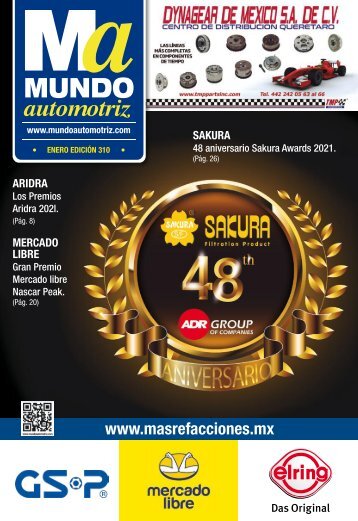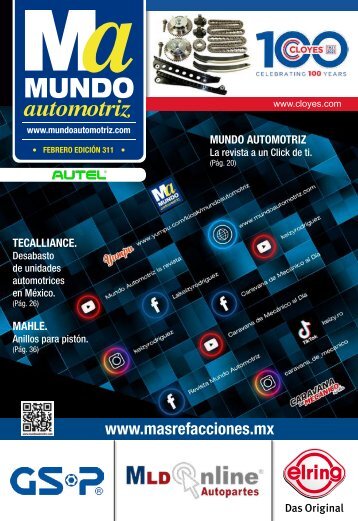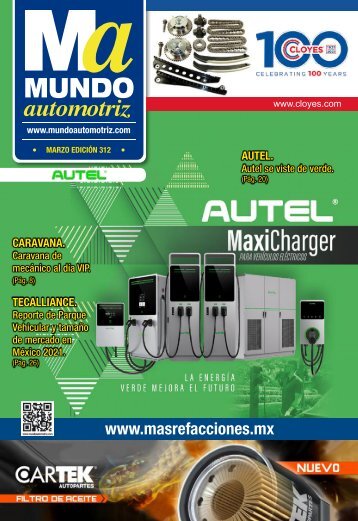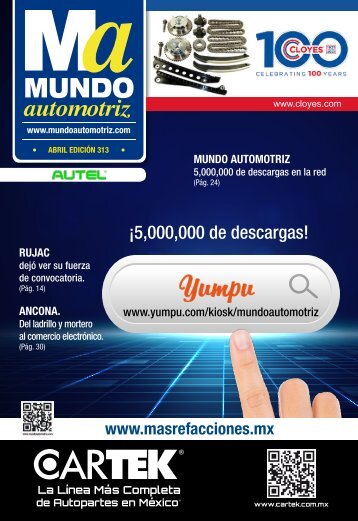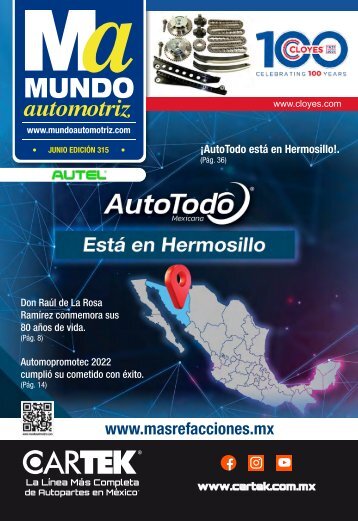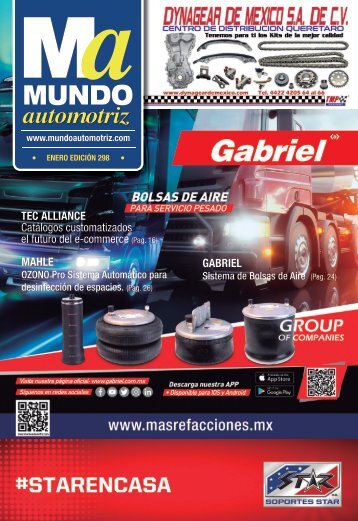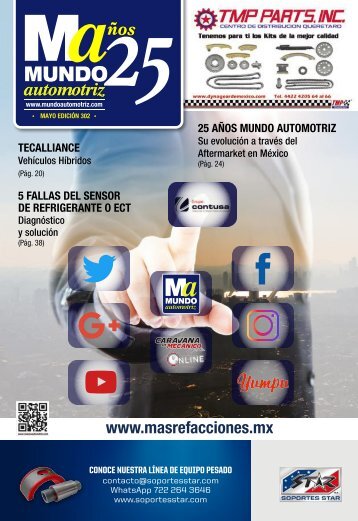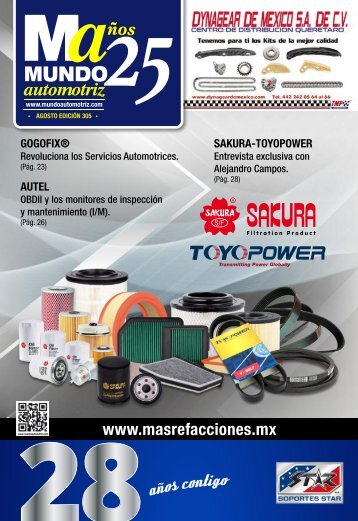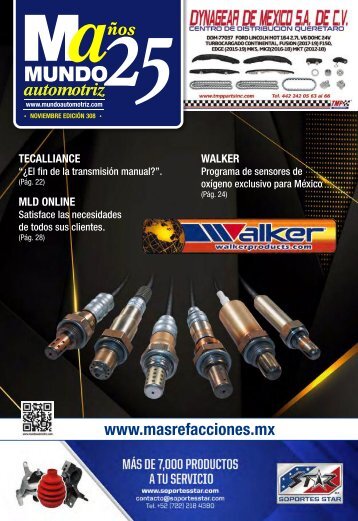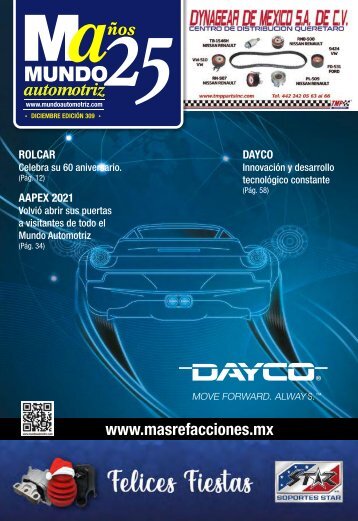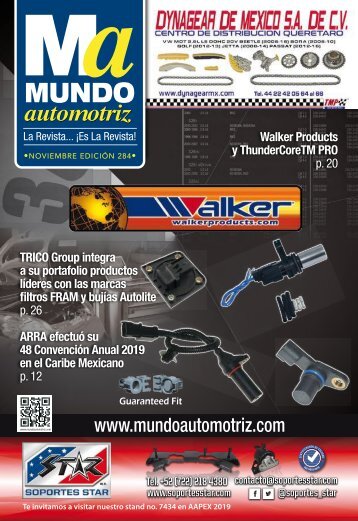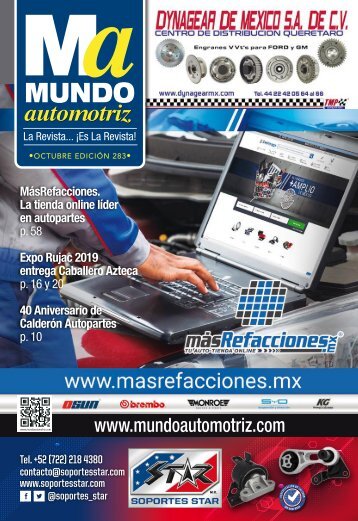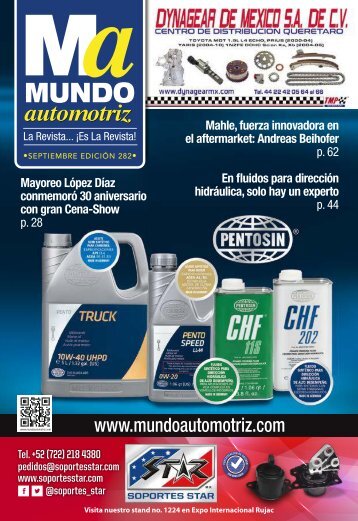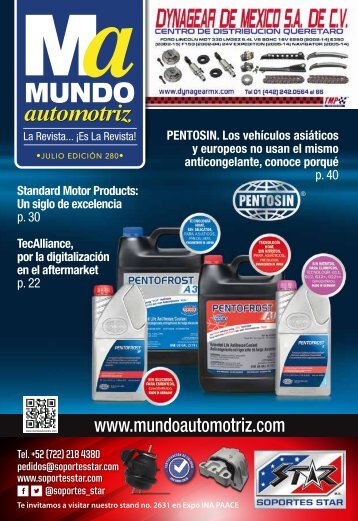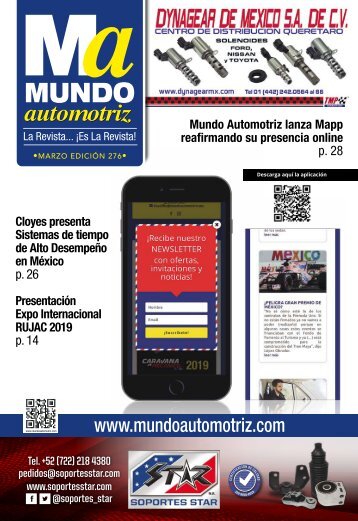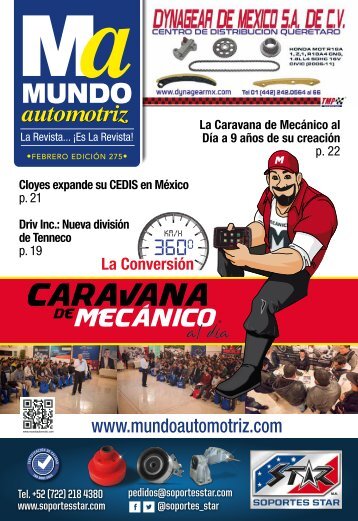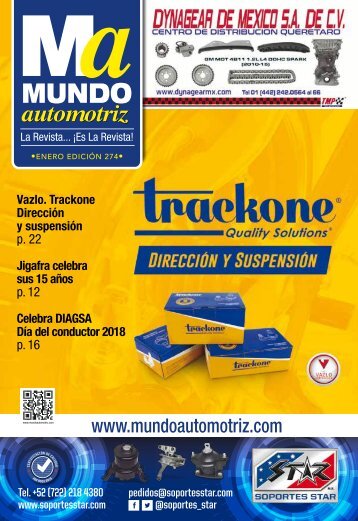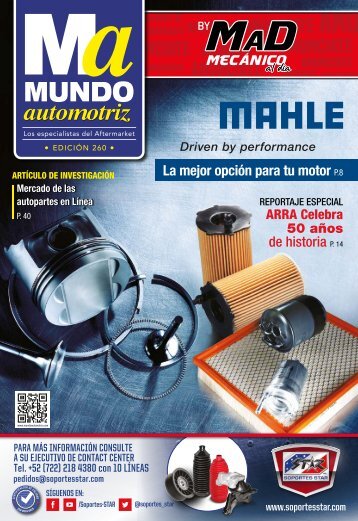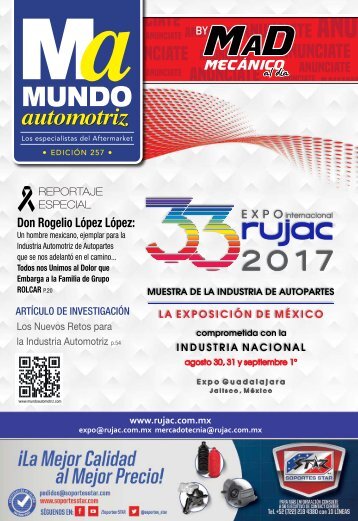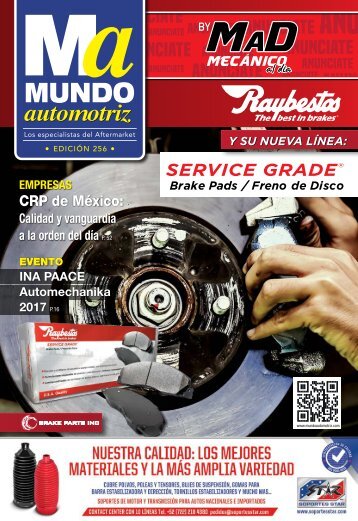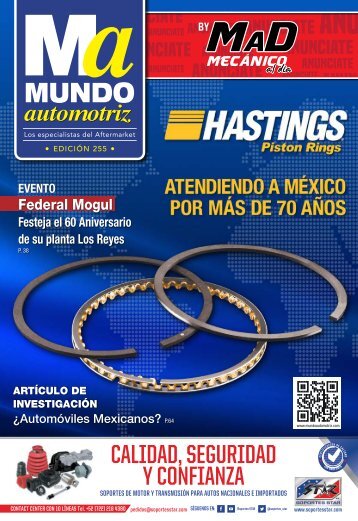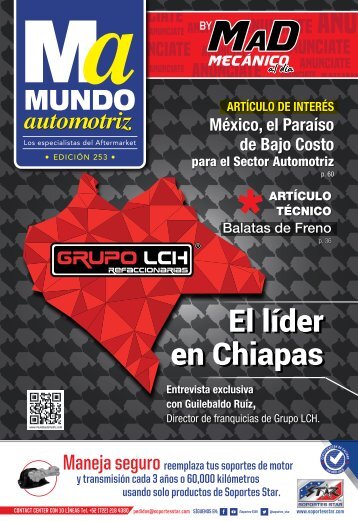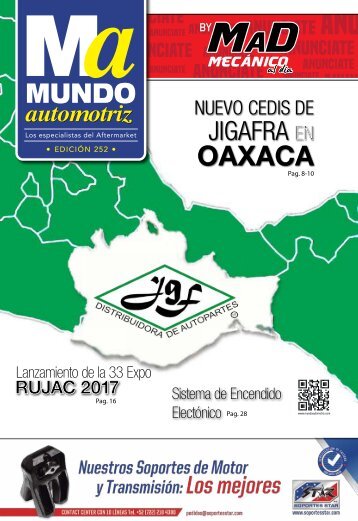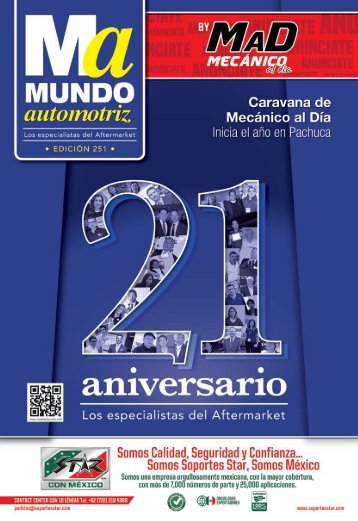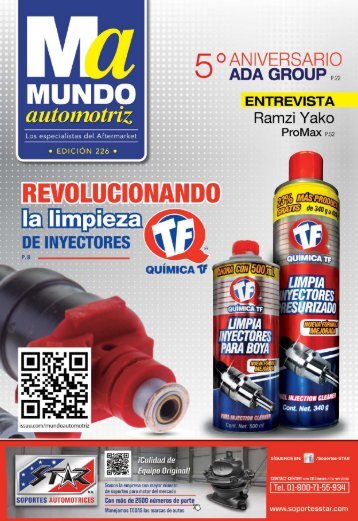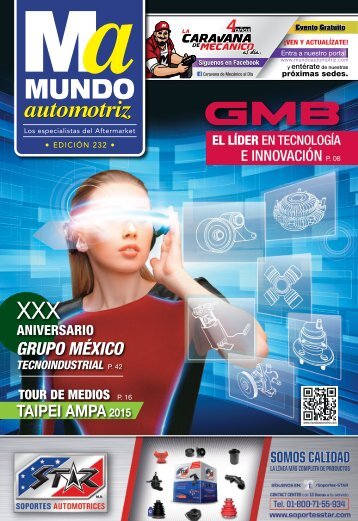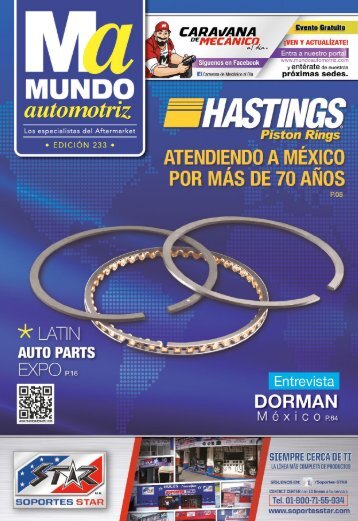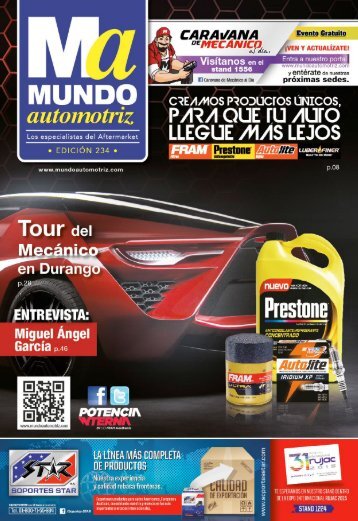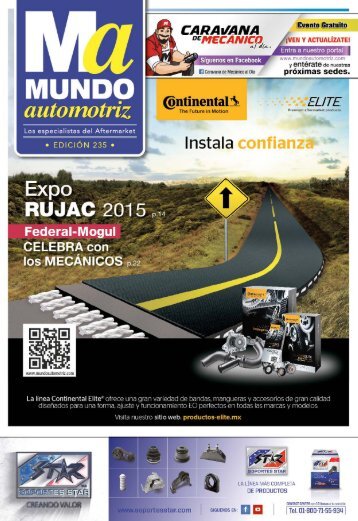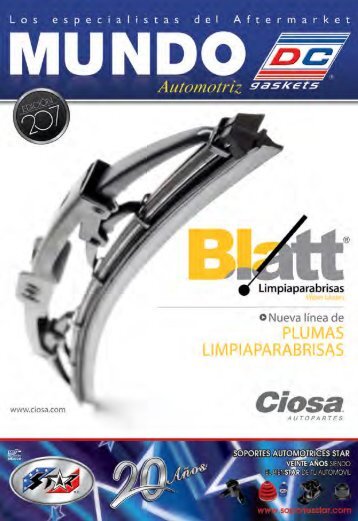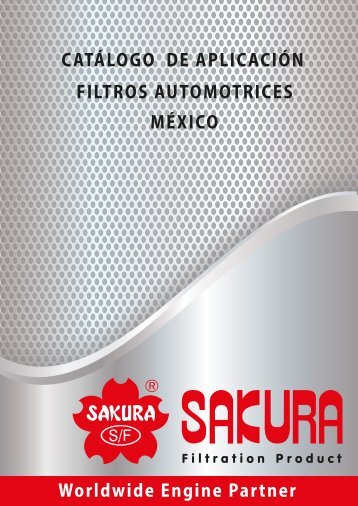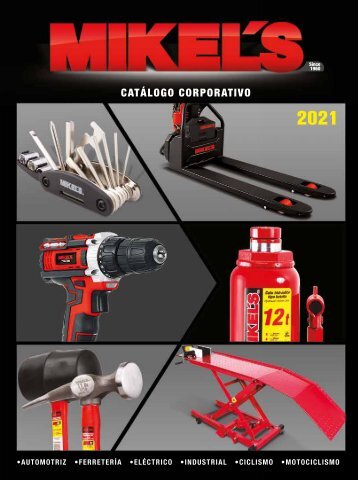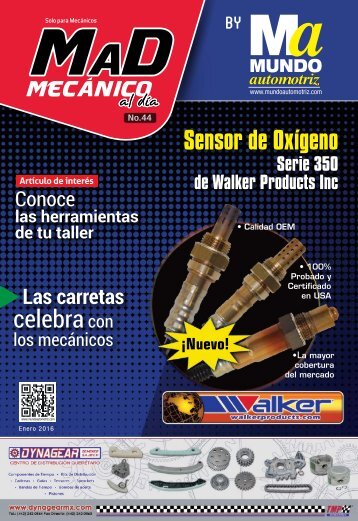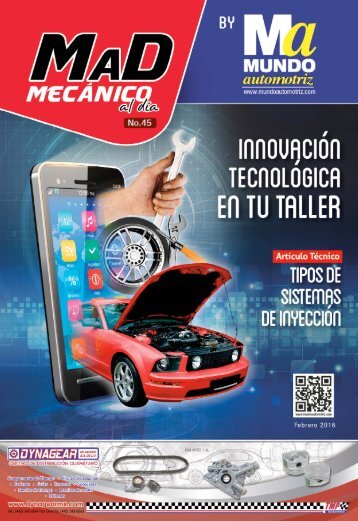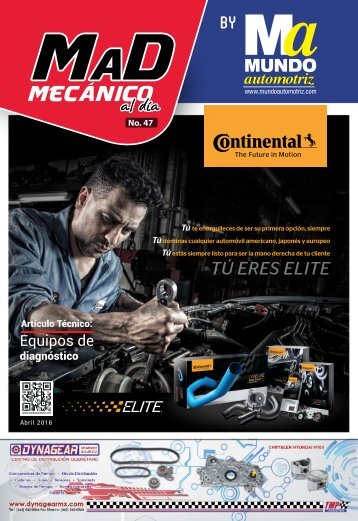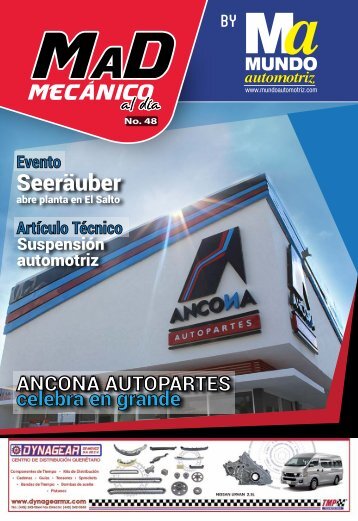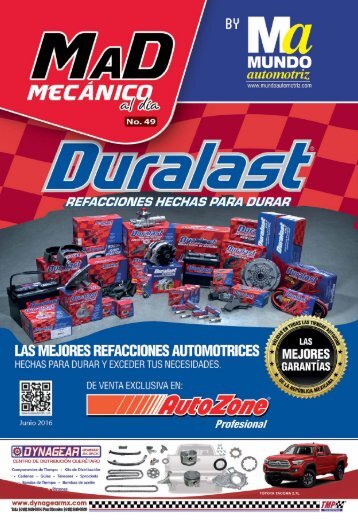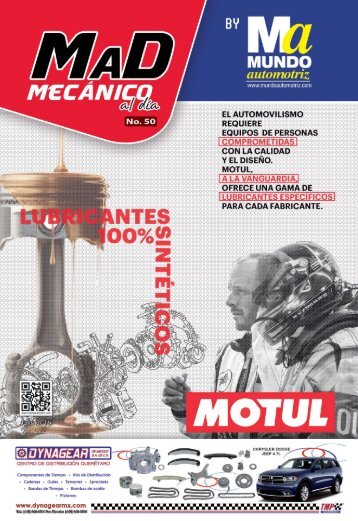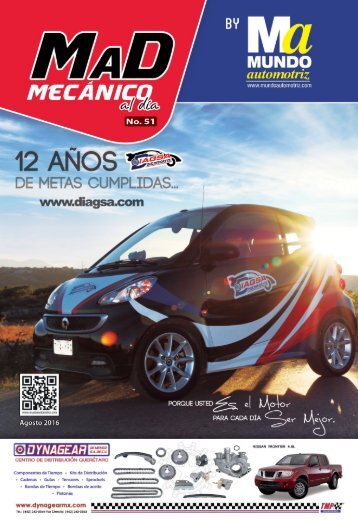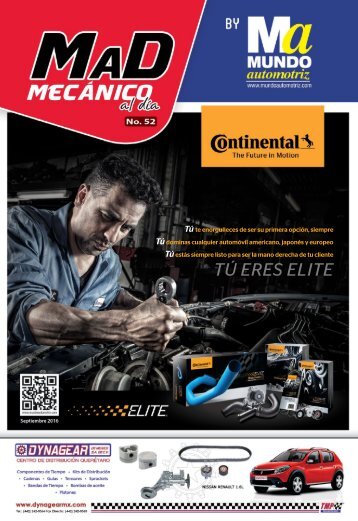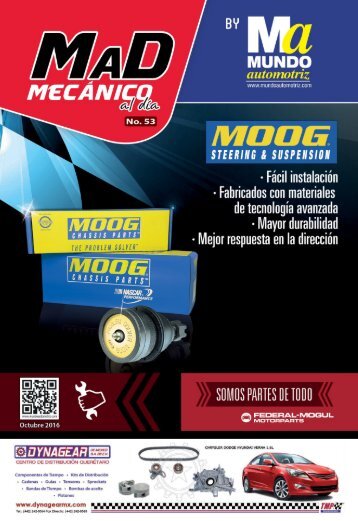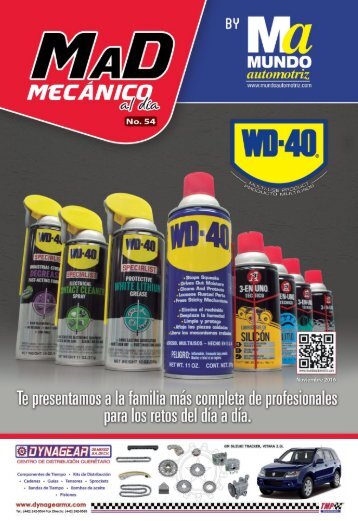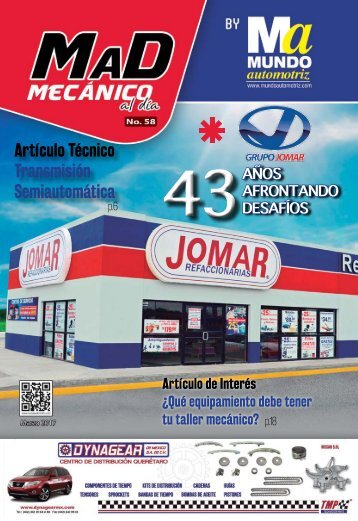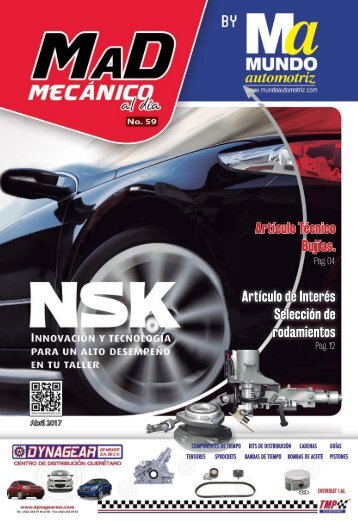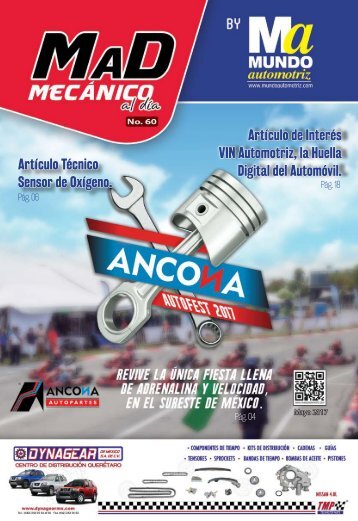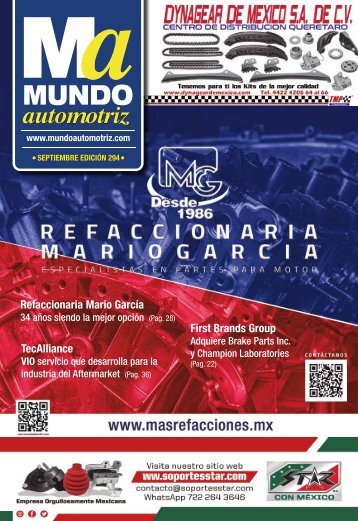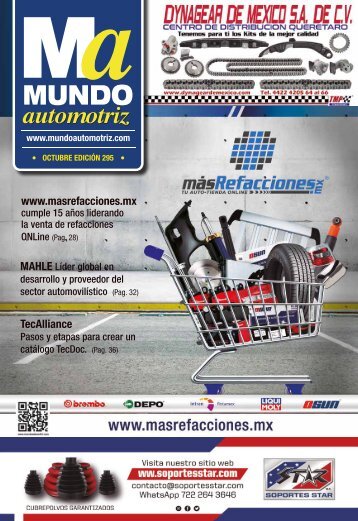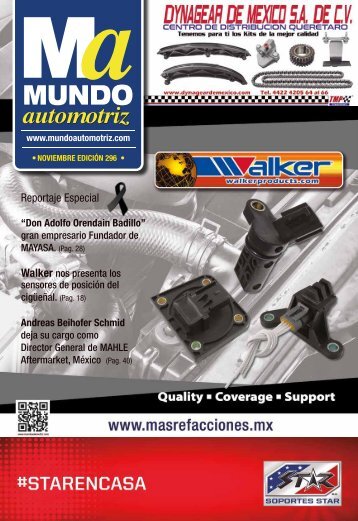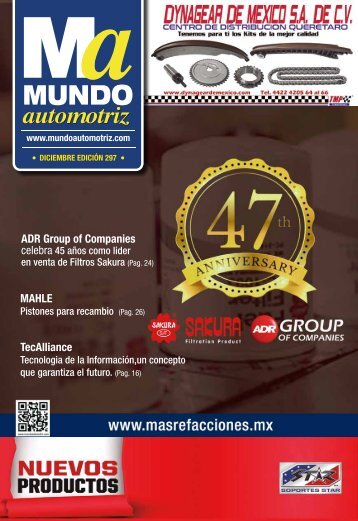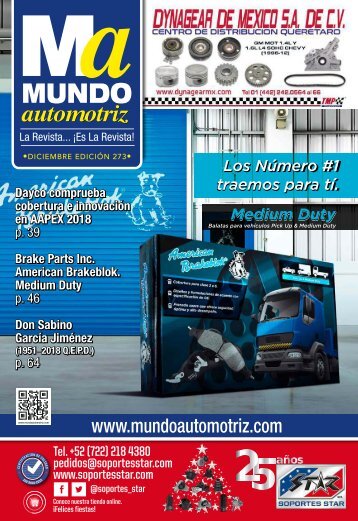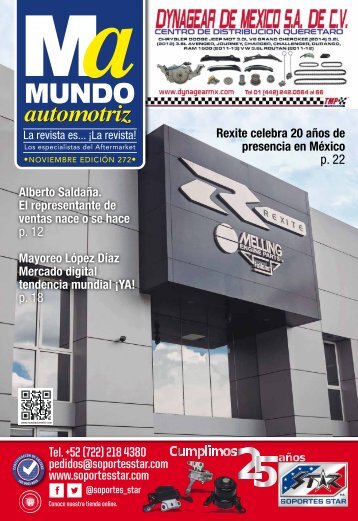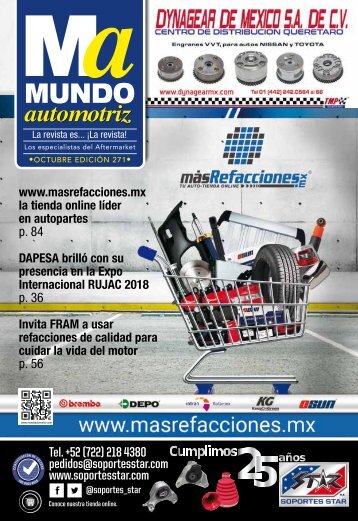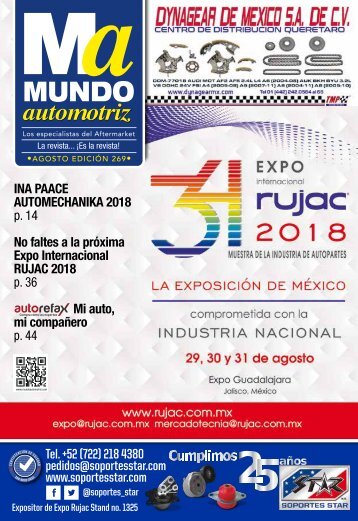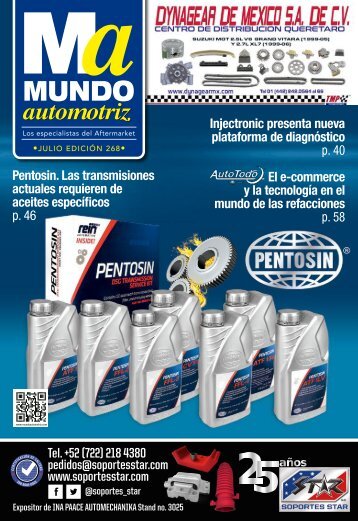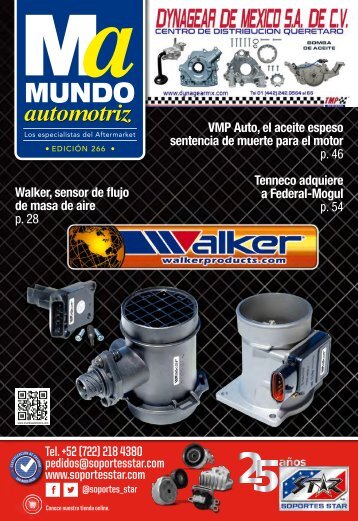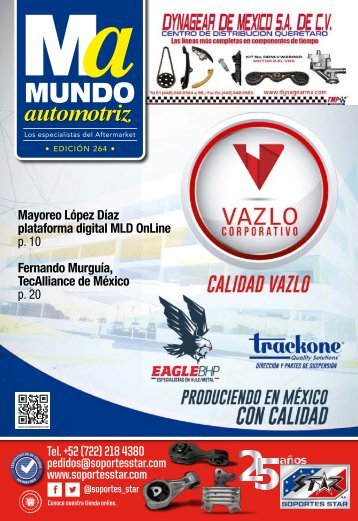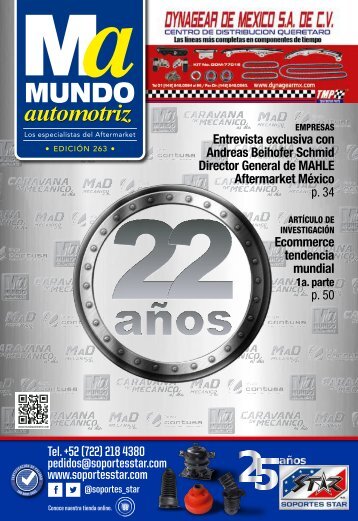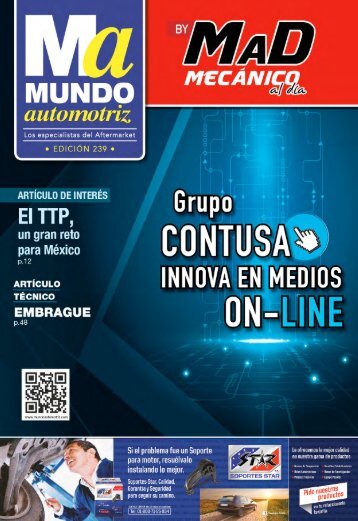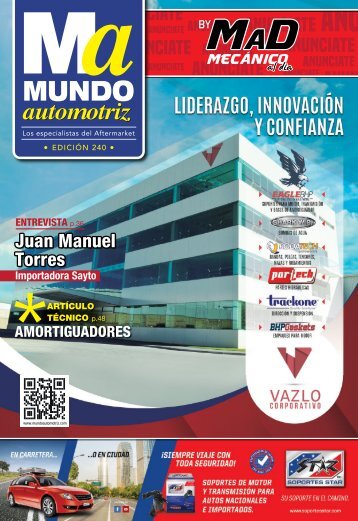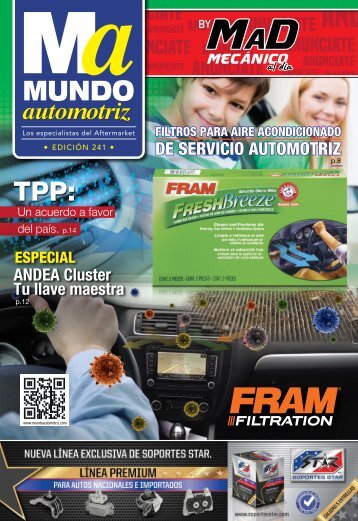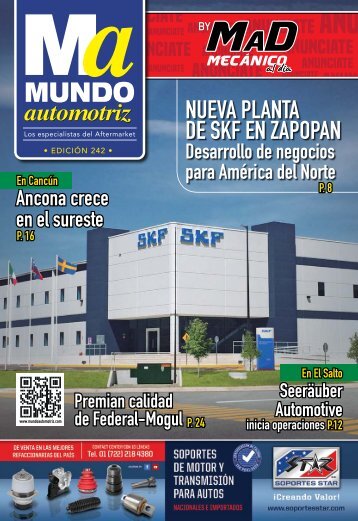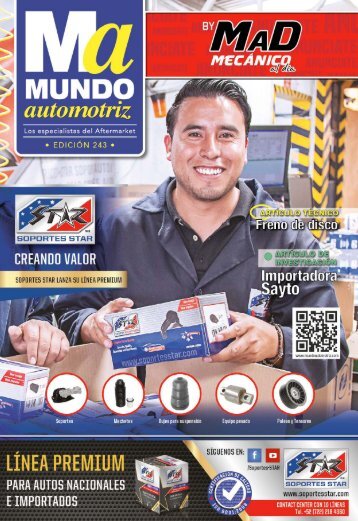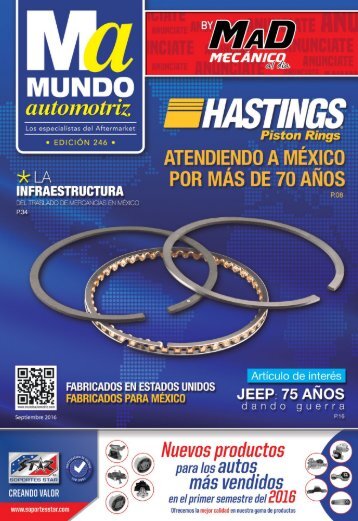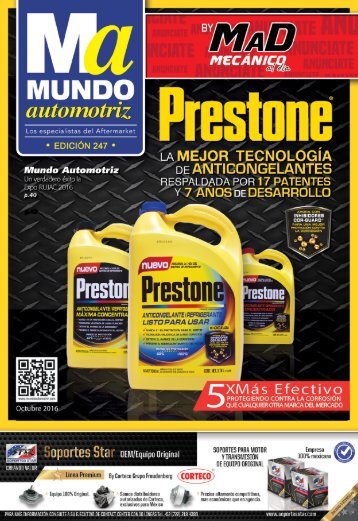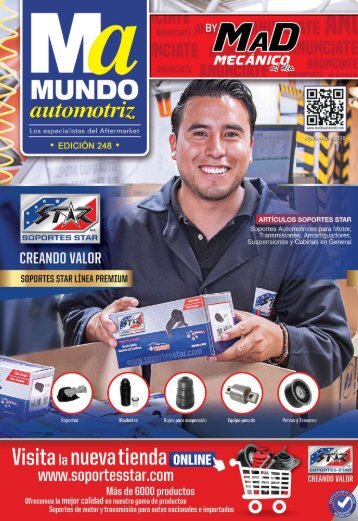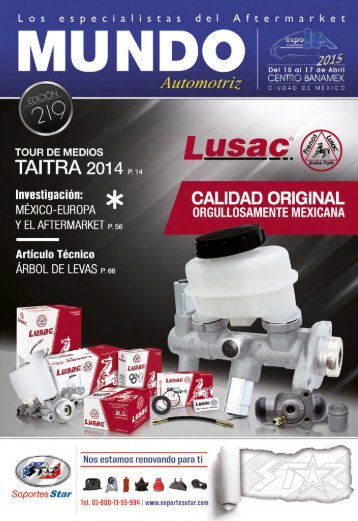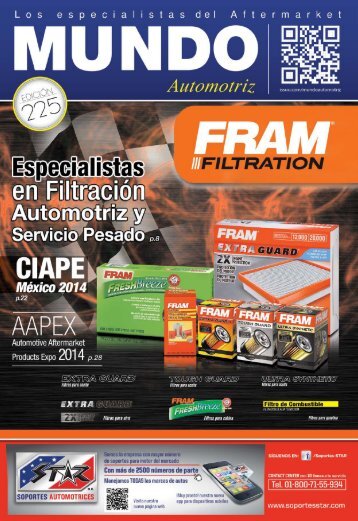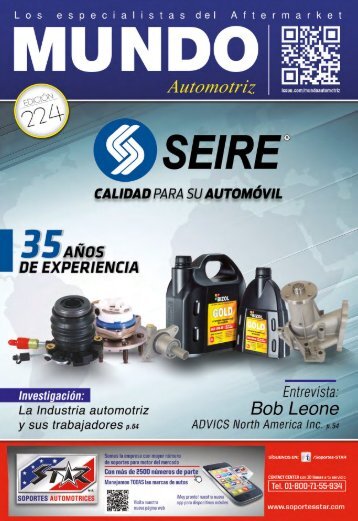
Índice ☟
Mundo Automotriz La Revista No. 253 Abril 2017
- Text
- Automotriz
- Mundo
- Evento
- Balatas
- Empresa
- Industria
- Pads
- Sistema
- Grupo
- Mercado
- Revista
- Abril
arTICULO TÉCNICO BRAKE
arTICULO TÉCNICO BRAKE PADS Brake pads are a component of disc brakes used in automotive and other applications. Brake pads are steel backing plates with friction material bound to the surface that faces the disc brake rotor. BALATAS DE FRENO Las balatas de freno son un componente de los frenos de disco que se utilizan en los automóviles y otras aplicaciones. Los discos de freno están pegados o remachados en placas de acero con material de fricción unido a la superficie que tiene contacto con el rotor del freno de disco. 36 Síguenos en: issuu.com/mundoautomotriz
arTICULO TÉCNICO Brake pads convert the kinetic energy of the car to thermal energy by friction. Two brake pads are contained in the brake caliper with their friction surfaces facing the rotor. When the brakes are hydraulically applied, the caliper clamps or squeezes the two pads together into the spinning rotor to slow/stop the vehicle. When a brake pad is heated by contact with a rotor, it transfers small amount of friction material to the disc, turning it dull gray. The brake pad and disc (both now with friction material) then “stick” to each other, providing the friction that stops the vehicle. In disc brake applications, there are usually two brake pads per disc rotor, held in place and actuated by a caliper affixed to a wheel hub or suspension upright. Depending on the properties of the material, disc wear rates may vary. The brake pads must usually be replaced regularly (depending on pad material), and most are equipped with a method of alerting the driver when this needs to take place. Some are manufactured with a small central groove whose eventual disappearance through wear indicates that the pad is nearing the end of its service life. Others are made with a thin strip of soft metal in a similar position that when exposed through wear causes the brakes to squeal audibly. Still others have a soft metal tab embedded in the pad material that closes an electric circuit and lights a dashboard warning light when the brake pad gets thin. Las balatas convierten la energía cinética del vehículo a energía térmica por medio de la fricción. El cáliper tiene dos balatas con su superficie, en dirección hacia el rotor. Cuando los frenos se aplican hidráulicamente, el cáliper presiona o apachurra las dos balatas juntas, hacia un rotor en movimiento para disminuir o parar al vehículo. Cuando la balata se calienta por el contacto con el rotor, transfiere pequeñas cantidades de material de fricción al disco, haciéndo que tomen un color gris opaco. La balata y el disco (ambos ahora con material de fricción) se “pegan” uno al otro, causando que la fricción detenga al vehículo. En las aplicaciones de disco de freno, generalmente hay dos balatas por rotor, mantenidas en su lugar y que actúan por un cáliper pegado a un cubo. Dependiendo de las propiedades del material, los rangos de desgaste del material pueden variar. Las balatas generalmente deben ser cambiadas regularmente (dependiendo del material de éstas) y la mayoría alertan al conductor cuando es necesario que se cambien. Algunas están fabricadas con un surco que eventualmente tiende a desaparecer por el desgaste indicando que su vida útil de servicio está terminando. Generalmente están hechas con una tira de metal suave, que al desgastarse hace que los frenos produzcan un ruido perceptible para el automovilista. Otras tienen una lengüeta pegada al material de la balata que cierra un circuito eléctrico y enciende en el tablero una luz de advertencia cuando las balatas adelgazan. www.mundoautomotriz.com 37
- Page 1: ARTÍCULO DE INTERÉS México, el P
- Page 6 and 7: Contenido EDICIÓN 253 Abril 2017 A
- Page 8: Editorial Directorio Car los Vi lla
- Page 11 and 12: Tema De pOrTaDa Fue gracias a la nu
- Page 14: AGENDA DE EVENTOS 2017 ABRIL SAE Wo
- Page 17 and 18: ¡Visítanos! www. mundoautomotriz.
- Page 20: EVENTOS MAHLE AFTERMARKET MÉXICO r
- Page 24: eVeNTOs En cuanto a la exportación
- Page 28 and 29: ¡SÓLO NOS FALTAS TÚ! ¡SÓLO NOS
- Page 30: EVENTO GRATUITO En Toluca Así mism
- Page 33 and 34: empresas Refaccionarias AGP escoge
- Page 36 and 37: empresas 34 Síguenos en: /Revista
- Page 40: arTICULO TÉCNICO DISC BRAKE ADVANT
- Page 43: arTICULO TÉCNICO • The ability t
- Page 48: SARREL INICIA LA CONSTRUCCIÓN DE S
- Page 51 and 52: INVesTIGaCIÓN Problemáticas de mo
- Page 54: SHOWROOM Llega edición especial de
- Page 58 and 59: arTÍCULO De INTerÉs GPS: Hoy en d
- Page 60: arTÍCULO De INTerÉs extrema en el
- Page 63 and 64: arTÍCULO De INTerÉs es una de las
- Page 65 and 66: ¿Sabías que? México tendrá su p
- Page 68: ¡Sé parte de nosotros! Hazte soci
Inappropriate
Loading...
Mail this publication
Loading...
Embed
Loading...

